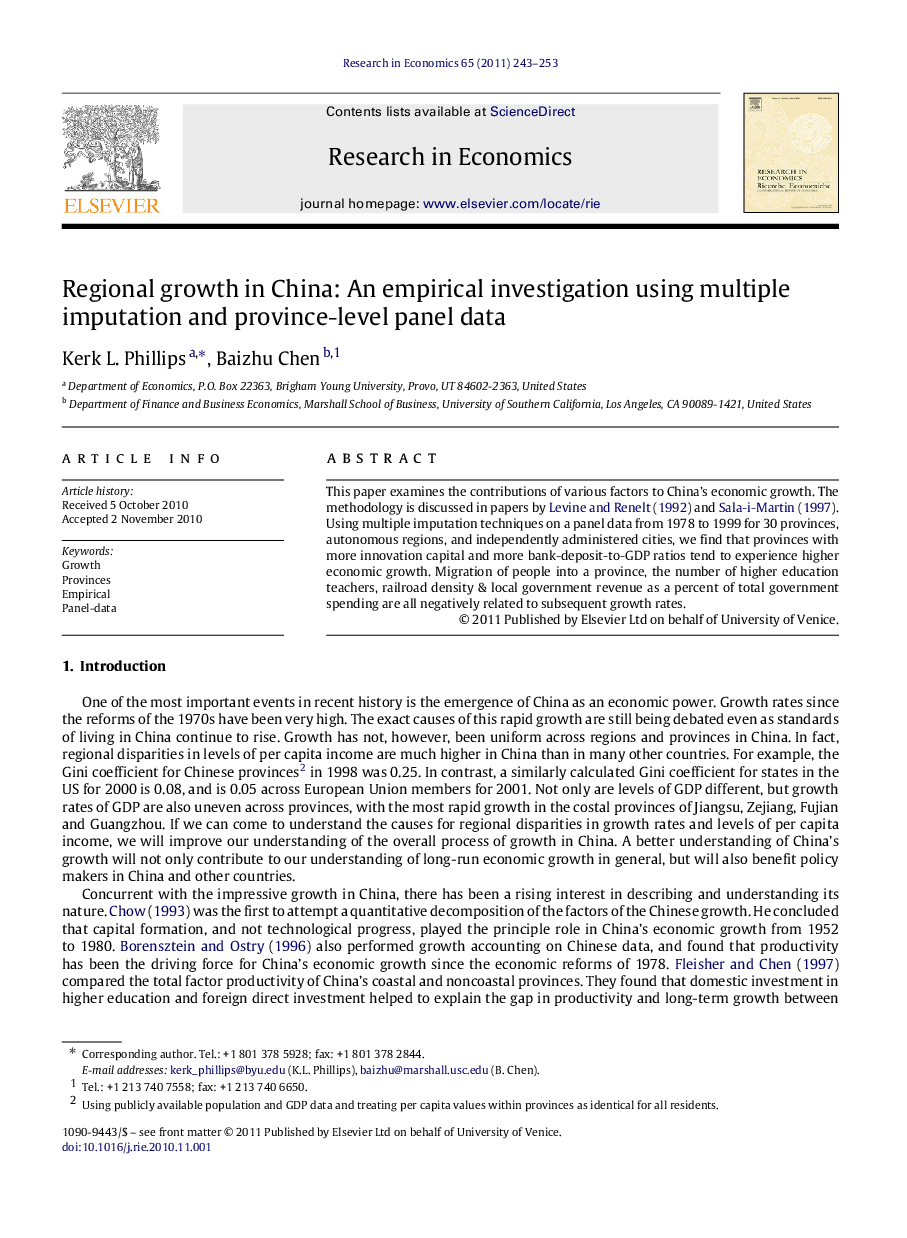| Article ID | Journal | Published Year | Pages | File Type |
|---|---|---|---|---|
| 984479 | Research in Economics | 2011 | 11 Pages |
This paper examines the contributions of various factors to China’s economic growth. The methodology is discussed in papers by Levine and Renelt (1992) and Sala-i-Martin (1997). Using multiple imputation techniques on a panel data from 1978 to 1999 for 30 provinces, autonomous regions, and independently administered cities, we find that provinces with more innovation capital and more bank-deposit-to-GDP ratios tend to experience higher economic growth. Migration of people into a province, the number of higher education teachers, railroad density & local government revenue as a percent of total government spending are all negatively related to subsequent growth rates.
Research highlights► Panel growth regressions are run for Chinese provinces for the years 1978–1999. ► Provinces with higher innovation capital and bank-deposit-to-GDP ratios grow faster. ► Immigration & high levels of local government revenue lead to slower growth. ► More higher education teachers and higher railroad density lead to slower growth.
